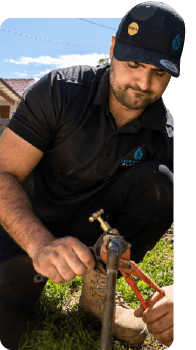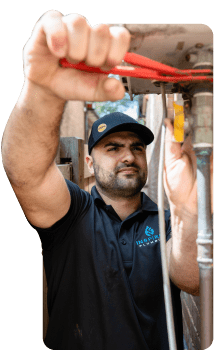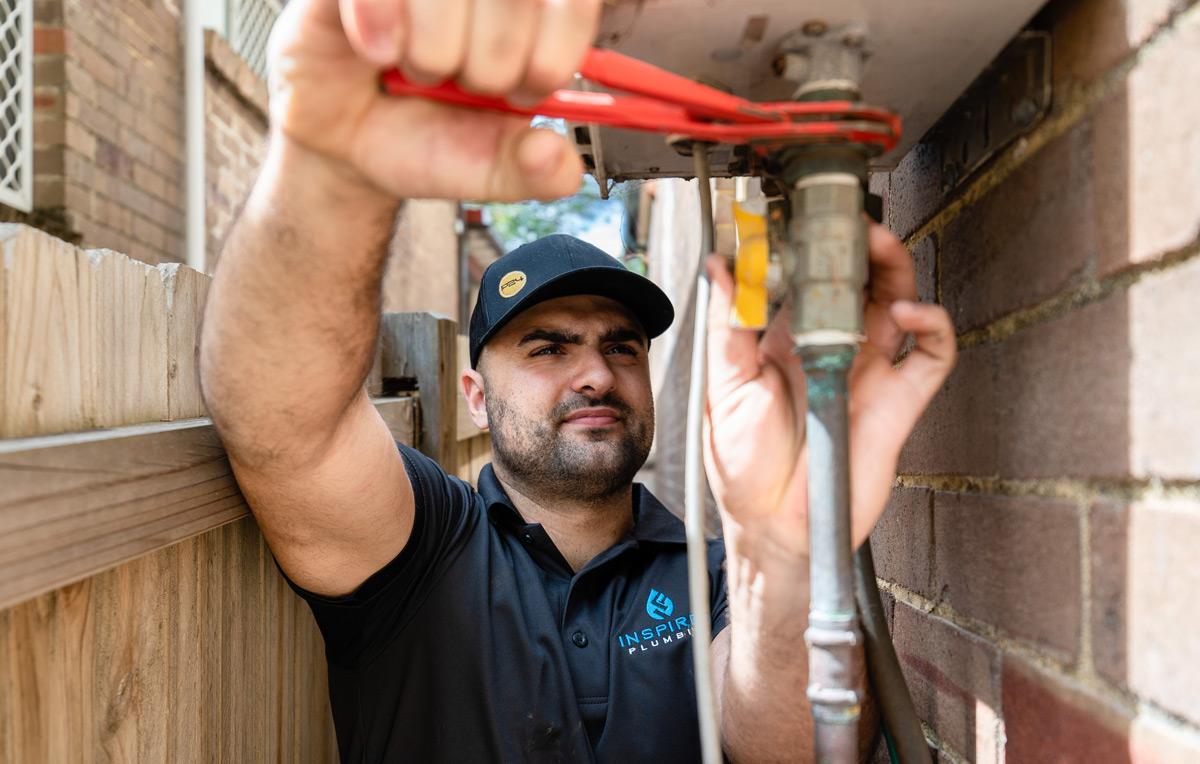we're open

Book now
Click to book a plumber
02 9158 3565
24/7 emergency service
Click here for
a free quote
a free quote









If your home appliances use natural gas, you’ve surely encountered a gas fitter at some point. A gas fitter is a certified professional who can install gas meters as well as install, maintain and repair gas appliances. Inspired Plumbing is your local gas fitter plumber and most trusted plumber Sydney wide, check what our customers says about us.
At Inspired Plumbing, our plumbers are licensed gas fitters, so they provide both plumbing and gas-fitting services. This is great if you’re renovating a kitchen with a gas stove or are having a gas hot water heater installed.
Natural gas is a popular and versatile fuel that’s abundant, clean-burning, and cost-effective. It also is piped directly into your home, providing a continuous supply. There is no need to schedule deliveries, as is the case with some other fuels.
Nevertheless, natural gas can be dangerous. It carries the risk of fire or explosion as well as posing a serious health risk for humans and household pets. This is why an amateur should never undertake a project involving natural gas.
Don’t worry! At Inspired Plumbing, our certified gas plumbers are ready to take care of all your natural gas needs -- whether it’s a hot water heater, installing a new natural gas appliance, or something else. Contact licensed gas plumber today.









While natural gas is considered quite safe, there are still precautions -- as with any fuel type. It’s essential to be aware of these precautions if you use natural gas.
There’s a unique and familiar odour associated with natural gas. It’s described as being like sulphur or rotten eggs. If you smell this in your home, leave the area immediately, being sure to all your family, pets, and your mobile phone are with you.
If it is safe to do so, try to shut off your gas at the emergency valve, then call us at Inspired Plumbing. We will attend urgently, and our emergency plumber will be able to isolate and repair the cause of the leak. In addition, we can check for any additional damage left following the gas leak emergency.
It’s recommended that every home that uses natural gas has at least one combined smoke and CO detector on every floor or level. These should be placed approximately 1.5m from the floor and away from outside walls.
A problem with natural gas and the CO it produces is that CO is an odourless gas.
This means that it can go unnoticed, even while people are suffering from its symptoms.
Until the very advanced stages of CO poisoning, it’s easy to mistake the symptoms for those of common illnesses.
Symptoms include:
If you or someone else in your household has one or more of these symptoms, especially if you’ve also smelled gas recently, seek medical attention right away.
Natural gas comes to your home from the local utility company through a gas line. It’s then routed through secure piping inside your home to the various appliances using it.
An example of an appliance that commonly uses gas in this way is gas hot water heaters. Depending on the age and function of the hot water heater, gas is ignited by a pilot light if it’s an older model or an electronic ignition if it’s more recent. Unfortunately, pilot lights tend to blow out and need to be relit.
Electronic ignitions in hot water heaters have solved that problem. They use a small electronic device called a surface igniter, which receives an electrical current when a thermostat calls for heat. The ignition heats to a temperature hot enough to ignite gas. Then it shuts off.
The most common natural gas appliances are gas furnaces, hot water systems, gas-burning fireplaces, and kitchen stoves.
Natural gas is commonly used for clothes dryers and can even be used to heat swimming pools.
Any of these appliances or systems can also be fueled by electricity or other fuel types.
However, natural gas is considered one of the least expensive and most practical fuels.




Let’s look at how natural gas heats your home - both the air and the water. This should help you understand how natural gas produces heat for other appliances as well.
As with a gas furnace, the parts of a gas water heater are few and basic. Here’s a description of the gas water-heating process:
Coldwater enters the tank through the supply pipe (dip tube) at the top of the tank. Gas comes in through the gas regulator, which includes a thermostat. The burner heats water at the bottom of the tank.
Hot water goes out through the hot water discharge pipe, also at the top of the tank, and the cycle begins again until no more hot water is needed.
A gas water heater also has a flue for releasing exhaust.
These are not common in Australia, we we'll explain it anyway. The basic home heating cycle goes something like this:
The flames heat the heat exchanger, gas is ignited, and the exhaust gases go out through the flue. The heat exchanger transfers heat to air being drawn into the furnace. A blower then forces the heated air into the ductwork, distributing it throughout the home.
As warm air fills each room, colder air is drawn back into the furnace via return ducts, and the process starts all over again.
It’s pretty straightforward -- though without the natural gas to burn, none of this would happen. Now let’s look at a similar process that takes place in gas water heaters.
All plumbers in Australia who work with natural gas must be certified. There are harsh penalties for those who aren’t certified.
We know, though, that some just slip through the cracks, perform shoddy work, and then maybe get caught after the damage is already done.
At Inspired Plumbing, when we say our gas plumbers are certified, we mean it - and can prove it!
